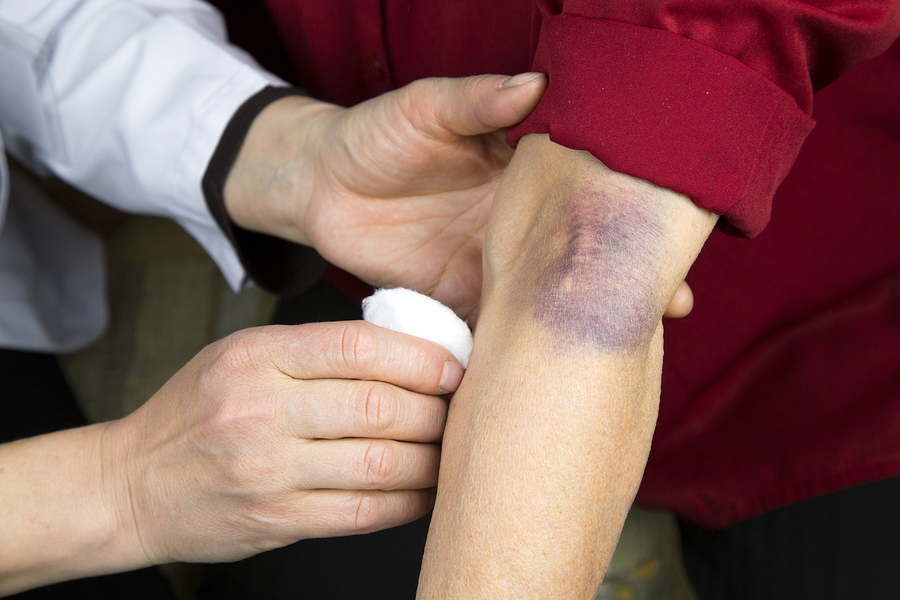What kinds of complications can occur from a contusion?
In rare cases complications may result as a contusion heals. Incurring a complication is more common when dealing with a severe rather than mild contusion, as severe contusions also cause more significant muscle fiber damage. Factors that may affect the risk of developing a complication include stretching the contused muscle too aggressively and too early on, not having an appropriate time for the contusion to heal before returning to activity, or massaging directly over the contused area too aggressively. Receiving early advice from your Physical Therapist and strictly following the advice in regards to your stretching, strengthening, and return to activity regime will significantly decrease your chances of developing a complication.
Hematoma
In more severe contusions, hematomas (blood clots) can develop as a complication within the healing muscle. A hematoma is felt as a hard lump in the muscle fairly early on in the recovery process. The development of a hematoma can delay recovery time, but the hematoma, in most cases, will eventually be reabsorbed back into the tissue, and a full recovery will be made.
Deep Vein Thrombosis (DVT)
In rare and serious cases, a contusion may lead to the formation of a blood clot. DVTs may cause swelling or pain similar to that of a contusion, or may occur without any symptoms at all. These clots are most often in the deep veins of the lower legs and there is a very serious risk of a piece of clot dislodging and travelling to the lungs and causing a blockage to the blood flow (pulmonary embolism). This condition is a medical emergency. Early, regular, and gentle movement of the injured limb can help prevent clots from forming.
Myositis Ossificans (MO)
With some severe contusions myositis ossificans may develop. This condition occurs most often with contusions of the quadriceps muscle (also known as corked thigh in some parts of the world) but can occur in any severely contused muscle. With myositis ossificans damaged muscle fibers turn into bone (ossify) but the exact mechanism of this conversion remains unclear. MO will also cause a lump in the healing tissue, similar to a hematoma, but the calcification of the muscle will not be felt or show up on x-ray usually any earlier than 4 weeks after the injury, which distinguishes it from a hematoma. Being too aggressive in early rehabilitation or returning to activity too early may be related to developing MO.
See STAR Physical Therapy’s Guide to Myositis Ossificans: http://www.honsbergerphysio.com/Injuries-Conditions/Muscle-Injury/Muscle-Injury-Issues/Myositis-Ossificans/a~8610/article.html
Compartment Syndrome
Another rare complication of a severe contusion in the upper or lower limbs, can be a compartment syndrome. When a severe contusion occurs there is a lot of local swelling and blood in the area, which has nowhere to escape to. The force of the extra fluid in the area can put pressure on the other local muscles and arteries and can cause severe damage or death to the muscles by cutting off their blood supply. Symptoms of a compartment syndrome occurring after a severe contusion include a sudden, new and excessive pain or ache in the injured area, pins and needles or tingling, difficulty moving the body part, and tightness on palpation of the area. An acute compartment syndrome requires emergency medical attention in order to decompress the compartment, restore blood supply to the tissues, and ensure no muscle death occurs in the affected area.


